In short, yes landscapers do trim small trees and bushes, but their main job is things like laying turf/ sod, fencing, retaining walls, paving, and other works that enhance the hardscape of your yard.
You would need to contact a tree cutting service near you if you were looking to get a tree larger than 15ft high trimmed or removed.
Anything smaller than 15ft. can be handled by a landscaper or garden maintenance company.
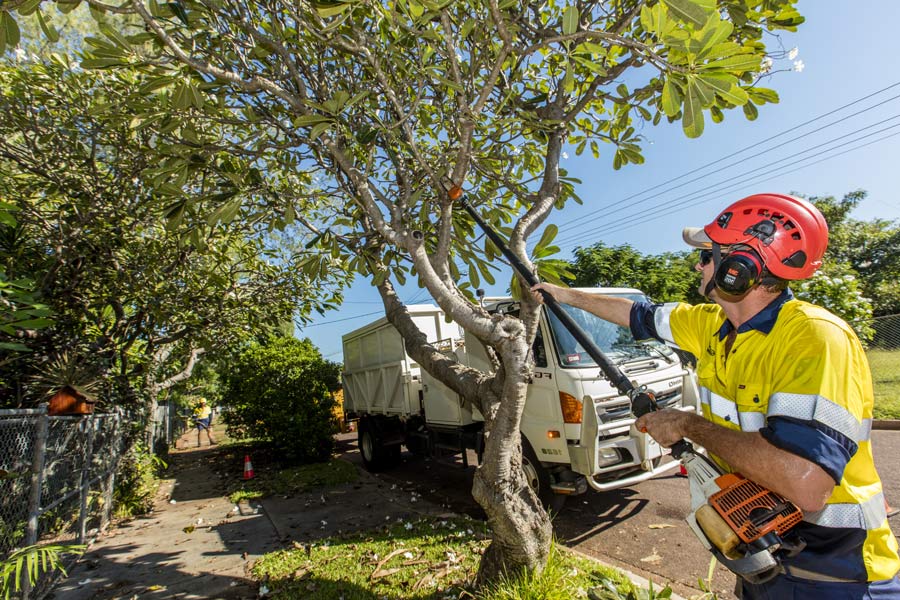
The differences come based on what they do and what they studied.
A landscaper is a person who has studied horticulture and some small-scale building skills like cementing and retaining walls. They have skills in the adjustment and management of the earth and water to improve the look and layout of yards.
In most cases, you will find a landscaper working on gardens to change their existing look and give them a fresh one.
An arborist has studied arboriculture which addresses managing large trees in an urban environment. An arborist is also known as a tree surgeon and their work focuses more on the well-being of trees including pruning, and removal if needed.
The main difference is that a landscaper is not well equipped to trim large trees which is the specialty of an arborist or tree surgeon.
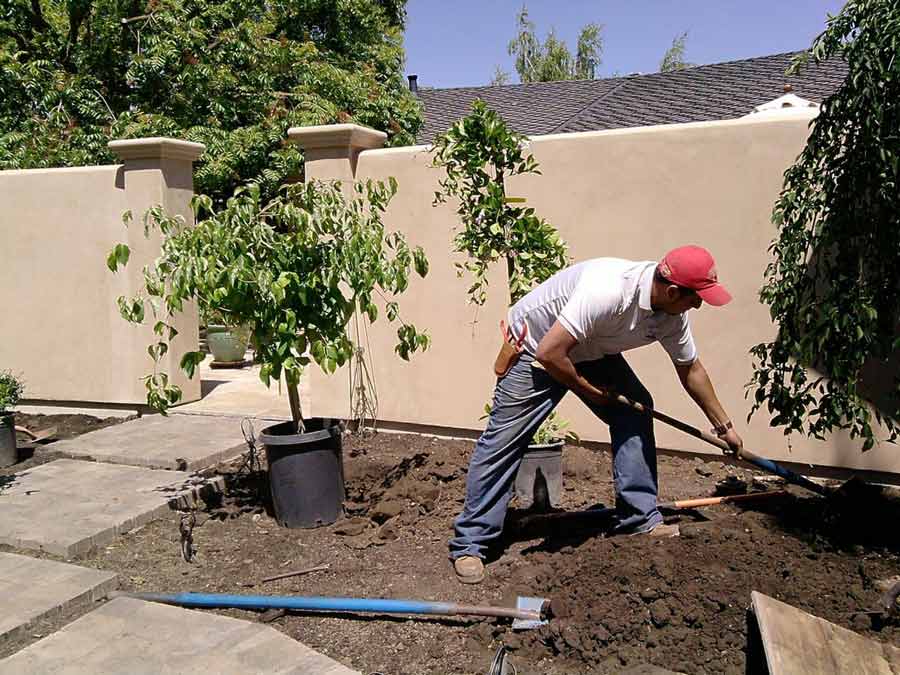
What landscapers do:
A landscaper can do a wide range of things such as:
- Design a new garden or yard layout
- Install lawns
- Install fences
- Retaining walls
- Paving
- Concreting
- Irrigation
- Mulching garden beds
- Planting trees
Since their main work is to manage the earth and water, they can trim bushes and small trees, plant flowers, restructure already established gardens, plant new gardens, installation of irrigation systems, and giving pools or patios a new look.
Some landscapers will work on small projects such as home gardens. However, some are used in handling huge projects that require a lot of expertise and manpower.
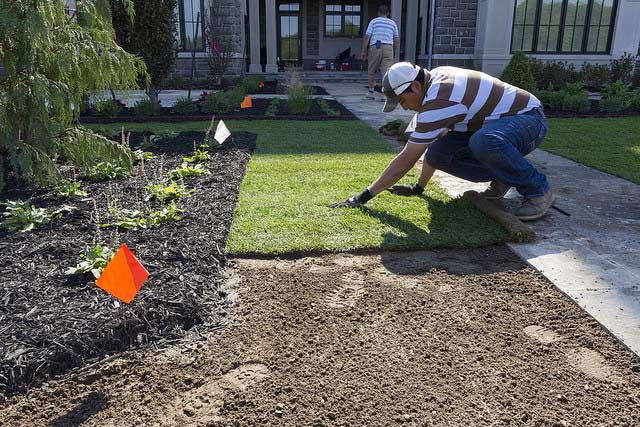
What arborists do:
Arborists work by taking care of trees by providing them with good care practices as well as nutrients to keep them healthy at all times.
Just like human beings, trees need to survive by getting food, water and getting the right health treatment.
Generally, arborists will make sure that trees are having the right treatment to ensure good co-existence with humans in a safe manner. They trim trees that are growing into buildings or power lines, shape large trees, or remove large trees in tight spaces if needed.
They also ensure the amenity value of trees is maintained through risk and hazard assessments. If the safe and useful life expectancy of a tree is coming to an end, they can write an official arborist report to be presented to the city for the removal of said tree.
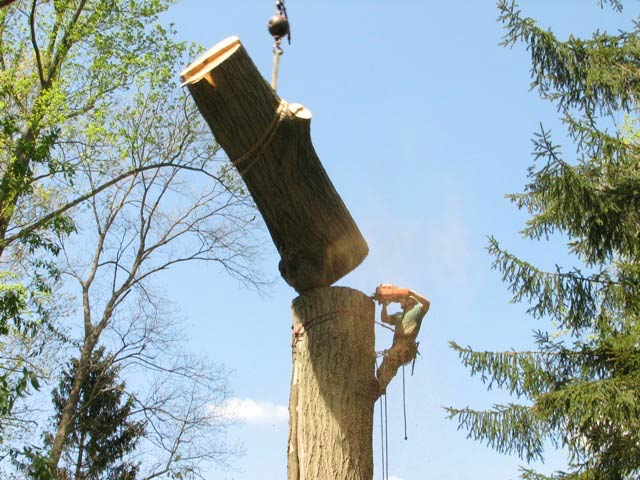





When to call a landscaper
Call a landscaper whenever you need to trim shrubs and trees on your property. If you want your garden given a new design and look then you should call a landscaper.
If you want an irrigation system installed in your home to provide water to your flowers and other trees then you should call a landscaper. Any time you need the aesthetics of your land changed.
When to call an arborist
Since an arborist is specialized in the well-being of trees, you should call them whenever you are in need of such services. They include the following.
- Tree removal- An arborist has more understanding of trees and handling. Whenever you want to remove a tree, they have the skills and equipment to help you do this.
- Tree pruning- In case your trees are infected have dead parts from insects or disease, there is a need for pruning. An arborist will help by also recommending how to prune.
- Emergency tree works- Sometimes you may find yourself in a situation where your trees need emergency care. This may result from storms, a risk to powerlines among others. Calling an arborist will be ideal.
- Stump removal- This will normally follow on from tree removal, or you could have an old stump you would like to get removed. Arborists have the right equipment to get the job done.
What does an arborist charge per hour?
Arborist jobs can be different in regards to the nature of trees, size, location, and the job as a whole. As a result, many of them charge per job rather than per hour.
This is because tree services have different sizes of crews and equipment at their disposal.
Two companies might charge the same amount for the removal of a tree, but the smaller company takes 2 days to do the job whereas the bigger company with more resources can do the same job in 4 hours.
Because of this, tree jobs are quoted for the completed job and not by the hour.
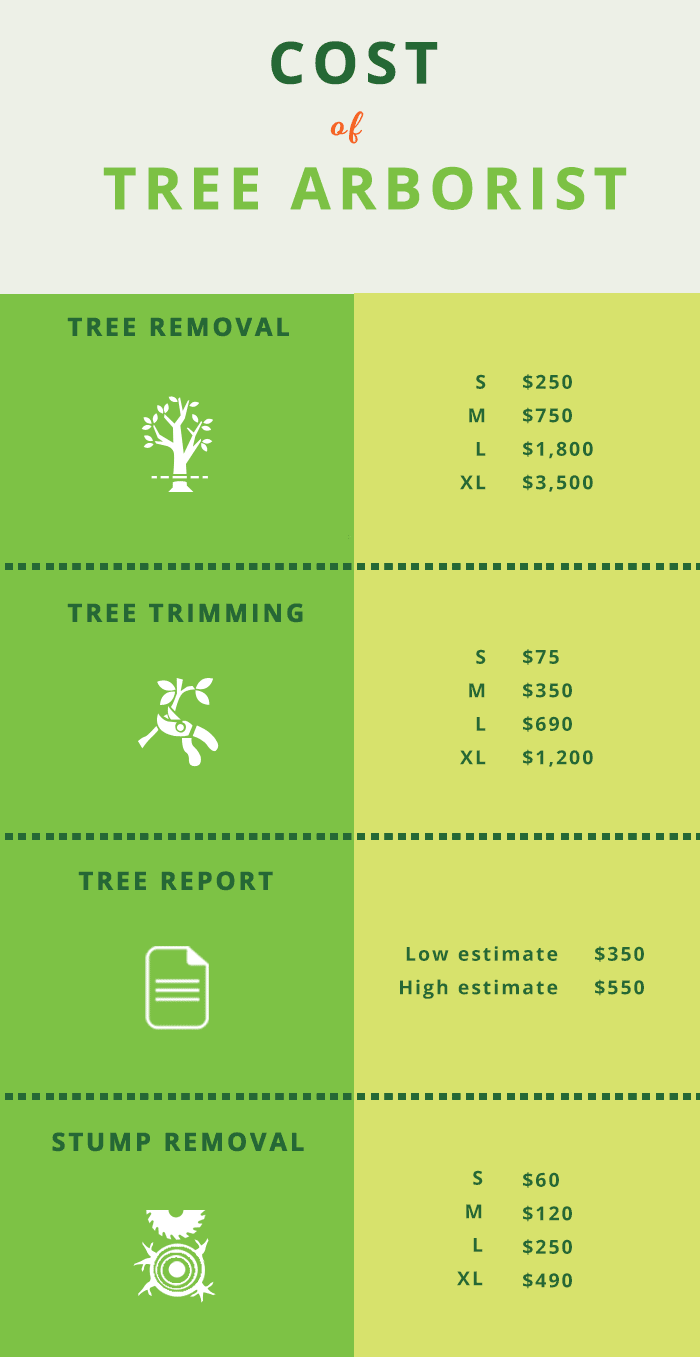
What is the average cost of an arborist?
The average cost of an arborist will be determined by several factors. Firstly it will depend on whether it’s tree removal or trim. Some other factors that arborists consider before charging you include the size of the tree, its ease of access, the number of branches being pruned, and the time of year.
However, you will find out that on average, you should pay between $375 and $1,500 per job. Remember that you have to know how much work you need to be done before you consult an arborist to enable you to get the right quote.
What does tree trimming cost?
Tree trimming is always a job whose requirements vary based on location, type of trees, size, and count of branches to be trim. These are some of the things that an arborist will consider before charging you for any trimming job.
You can imagine having very large pine trees and you want to pay the same as small palm trees. Some tasks will even require special equipment such as cranes to get the job done. However, expect to pay between $75 per tree upwards to $2,500 based on the job to be done.
FAQ's
You can trim a tree whenever you like just as long as you are only removing no more than 10% of overall foliage. If you intend to remove more, you are best to wait until winter. This is when pests and fungus are dormant. This will give your tree time to heal before the attacks begin.
You are responsible for any tree on your property. This includes maintenance and upkeep. If the tree is in your neighbor’s yard and hanging over your yard, they would have to pay.
Normally tree trimming is best done in winter, but if it’s only a small prune (less than 10% of foliage) then pruning in spring should be fine. Obviously, emergency trimming jobs such as building clearance, broken branch clean-ups are also fine.
It is possible for a tree to die from trimming, but if done correctly, tree trimming is very beneficial for the tree’s overall health. If the trimming is done by a trained arborist at the right time of year, then your tree will respond will beautiful luscious foliage, more flowers, fruit, and a much healthier look. If done incorrectly you can put a lot of strain on the tree and slowly deteriorate its health.
If your tree is hanging over your neighbor’s yard they are well within their rights to trim your tree, just as long as they are not breaking any tree audience laws in the process. It’s the norm for them to ask your permission first before pruning, but it is not against the law as it is encroaching on their property.
Hedge trimming is priced a little differently from regular tree trimming. The factors to consider are the height of the hedge, the length, and the state of growth. The following prices are for hedges that are regularly pruning and no more than 3 – 4 inches of growth are needed to be removed. Small hedge 3 – 6 ft. (height) will cost $100 for the first meter (length) and $50 for every additional meter. Medium hedges 6 – 9 ft. (height) will cost $140 for the first meter (length) and $70 for every additional meter. Large hedges 9 – 12 ft. (height) will cost $210 for the first meter (length) and $100 for every additional meter.






